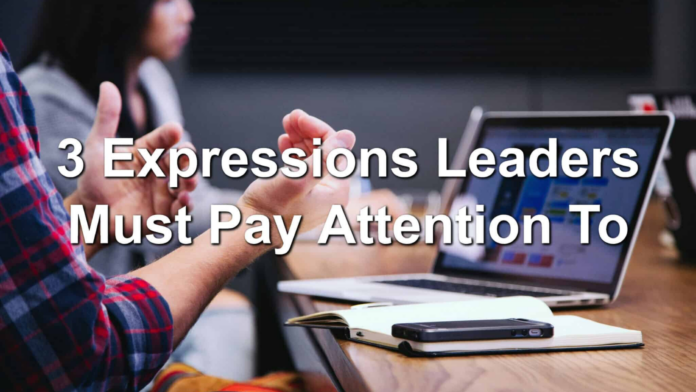Reading your team members can be a difficult task. There’s so much to pay attention to and so much happening around us.
However, if we miss out on our team member’s expressions, we miss out on the cues they’re giving us. These cues can tell us if they’re stressed, struggling, or even frustrated.
Most of the time, our team members don’t even know they’re expressing something. These are subconscious expressions that tell the real story.
We must learn to pay attention to the expressions.
3 Expressions Leaders Must Pay Attention To
Verbal Expressions:
The first, and maybe the easiest, expression to pay attention to is team members’ verbal expressions. Why? Because we can hear what they’re saying.
Listen to how they’re saying the words they’re saying. The tone, inflection, and repetition can help you understand what’s happening.
Are the words your team member is saying tense? Can you feel the ice-cold daggers in each and every word? Are there phrases he’s repeating?
Pay attention. These things are clues to deeper meaning in their communication.
Body Expressions:
You also have to look at their body expressions.
Are their arms crossed? Do they tap their feet or fingers, showing impatience? Are they standing tall, slinking down, or slouching?
All of these body expressions can tell you whether someone is engaged, excited, or ready to get the heck out of dodge.
The body expressions people show will help you understand where they’re at.
Facial Expressions:
Last but not least are the facial expressions of your team members. These can be just as obvious as verbal expressions.
Do they have a scowl on their face even though they’re trying to pass off happiness? Are they smirking, looking like they’re hiding something? Or are they stone-faced and without emotion?
All of these facial expressions are trying to tell you something. You have to be aware of what the other person is expressing through their face.
What Now?
Great… now you know what expressions to pay attention to. What do you do next with this information?
You start to apply it to the way you interact and acknowledge people. Learn to examine the facial, verbal, and body expressions of those you lead. Learn to understand what each person is saying through these mediums.
Then, begin to adapt your leadership inquiries to these expressions. You can use their expressions to dig deeper.
You might ask if everything is alright if you see puffy eyes yet a happy demeanor. Or you might record (with permission) a team member and ask them how they see themselves in the video. You may be able to open their eyes to poor body expression and help them change.
You have the power to help your team understand that they’re saying more than words. They’re speaking with their body, facial, and verbal tones.
The more aware you and they are of these expressions, the clearer the communication can become.
Don’t be afraid to pay attention to the expressions of your team members. It’ll help you and them.







